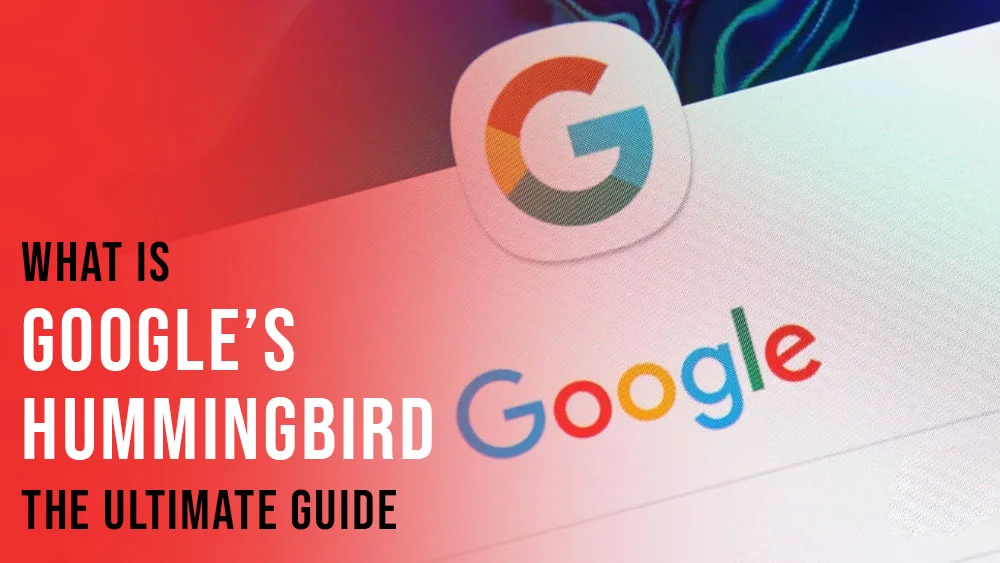As we are currently experiencing a digital age that is expanding ever so greatly, the way we interact with search engines is also expanding. Google’s algorithms are at the heart of this expansion and evolution. It is continuously changing and shifting. That is, to improve how users find the most relevant information and reach what they’re looking for easily and without any hassles. Along with the updates that Google’s algorithms went through came Google’s Hummingbird. This is an update that was launched in 2013 and marked one of the top most important Google updates up until today in 2024. Developers and SEO specialists didn’t just consider this an update.
As a matter of fact, they actually perceived this as a representation of a substantial shift in how Google understood and responded to search queries. But what is Google’s Hummingbird? Why am I dedicating a full guide to it? And how does it impact SEO in today’s digital space? This is what we will discover below in this article. This guide aims to take you through everything you need to know about Google’s Hummingbird, from its core functions to how it gets implemented in SEO strategies.
What is Google Hummingbird and Why Did Google Introduce It?
Google Hummingbird was introduced as a “whole new engine,” not just a tweak or an add-on to previous algorithms. It allowed Google to interpret search queries in a much more comprehensive way, focusing on meaning rather than just individual words. Hummingbird didn’t simply prioritize single keywords; instead, it considered the context behind searches. This is a smart update that knew how to understand what we call these days the “search intent.” It was designed and made to provide search engine surfers (Google’s specifically) results that are accurate enough for them.
For example, when someone searches, “Where can I buy eco-friendly plastic bags near me?” Hummingbird examines the entire phrase, understanding that the user wants a nearby location to purchase eco-friendly plastic bags. Without Hummingbird’s interpretation, Google would likely miss the mark, presenting results based solely on keywords like “plastic bags” or “buy.” I know it saved us a lot when it comes to using the right words for researching.
Before Hummingbird, Google relied heavily on keywords to interpret search intent, often leading to results that didn’t fully address the user’s needs. Recognizing the shortcomings in keyword-centred search, Google aimed to shift toward a more intuitive approach. The goal was simple yet ambitious: allow users to find answers through natural, conversational language rather than relying on exact keywords. In essence, Hummingbird represented Google’s pivot towards understanding what people are truly asking for when they search, rather than just matching words.
Key Features of the Hummingbird Algorithm
Hummingbird is packed with features designed to understand queries in more intuitive ways. It was initially designed to understand long-tail keywords that aim to convey the message of a certain intent. Here are some of those features that contributed to the making of those intuitive ways:
- Conversational Search: Rather than focusing on individual words, Hummingbird aims to understand full questions. This is especially beneficial for users who search in complete sentences.
- Natural Language Processing (NLP): By leveraging NLP, Hummingbird interprets human language in a way that bridges the gap between humans and machines, identifying nuances and implied meanings in queries.
- Semantic Search: Hummingbird doesn’t just pull up results based on keywords; it evaluates the context of the query. By understanding the overall meaning, it finds information that aligns closely with user intent.
How Hummingbird Impacts SEO: Is It a Positive Impact?
So, how does Hummingbird affect SEO strategies? There are many ways that Google’s Hummingbird impacts SEO. Delve deeper with me in order to understand how that impact happens and whether it is a positive one or a negative one. Here’s how it helps:
Through Enhancing Content Relevance: Quality content has always been essential, but Hummingbird brought a renewed focus on relevancy. It encourages content creators to produce information that truly answers users’ questions rather than simply including keywords.
Through the Usage of Long-Tail Keywords: With Hummingbird, it’s more beneficial to focus on longer, conversational phrases (long-tail keywords) that mirror natural language. Instead of “best running shoes,” for example, “What are the best running shoes for trail running?” would likely yield better SEO results.
Through the Enhancement of User Experience: The algorithm values user-centric content that satisfies queries quickly and effectively, rewarding sites with clear, structured information that’s easy to navigate.
Practical SEO Strategies Post-Hummingbird

To make the most of Hummingbird, here are some effective SEO strategies:
- Write for Humans, Not Just Bots: Create content that’s easy to understand and addresses users’ needs. Google prioritizes content that feels natural, readable, and valuable.
- Use Synonyms and Related Terms: Instead of repeating keywords, utilize variations and synonyms. This practice not only enhances readability but also signals to Google that the content is rich and diverse.
- Optimize for Voice Search: With the rise in voice search, consider optimizing content around conversational language. Hummingbird favors these types of searches, especially for local results.
For example, if a local restaurant wants to improve its SEO, it could include phrases like “Where’s the best Italian restaurant near me?” to better capture conversational searches. This allows people to find what they need at their own pace and convenience.
Common Misconceptions and “Myths” About Hummingbird
Some SEO myths have persisted about Hummingbird since its release. One of the biggest myths that I found out about Google’s Hummingbird is that people consider that it is what we call a “penalty update.” What does that mean? Let me tell you. A lot of people think that Hummingbird was designed to penalize sites. That is, rather than that it was designed to enhance search queries. Additionally, developers updated it to give users a whole new smart search intent experience that will transform the way they use Google to search for whatever they want. Sites that saw a drop in rankings likely weren’t as user-focused or relevant in their keyword choices or SEO optimization as others. And that must’ve made their rankings sink lower. That being said, people tended to connect both the update and their lower rankings, and thus this myth came to life.
Another main myth that I would like to shine the spotlight on is that Google’s Hummingbird doesn’t lower the rate of importance of the usage of valid keywords and a good keyword strategy. Yes, it does help with search intents and offers more specific result pages; however, it doesn’t delete or eliminate the importance of keywords. Let me rectify things here when I say that Hummingbird simply requires a more thoughtful and natural integration and implementation of keywords instead of cramming your content with keywords and stuffing them where they don’t belong to pass the SEO optimization test or something. These insights can help content creators approach Hummingbird with confidence, understanding that relevancy, not punishment, is the algorithm’s core aim. With that being said, I hope that you too leverage the power of Hummingbird and get to understand that it does more good than harm here.
Examples of Hummingbird in Action and FAQs
To see Hummingbird in action, consider how search results differ when users type specific, intent-based queries. Let me walk you through a hypothetical example: the phrase “tips for preparing a vegan meal on a budget” triggers results that cater to budget-friendly vegan meal preparation. That is, rather than general vegan meal recipes.
This enhanced relevancy demonstrates Hummingbird’s powerful understanding of context and intent. Want to delve deeper and get to understand what people frequently ask regarding Google’s Hummingbird? Here are some frequently asked questions that may help:
- How does Hummingbird affect keyword strategies?
Hummingbird promotes a shift toward long-tail, intent-driven keywords rather than exact-match keyword phrases. It simply aims to match user intent through diverse and conversational phrases.
- Is Hummingbird still relevant with newer updates like BERT?
Yes, while updates like BERT have further refined Google’s language processing abilities, Hummingbird remains a foundational algorithm that introduced the semantic, intent-based search approach. BERT enhances these capabilities rather than replacing them.
- How can small businesses leverage Hummingbird in their SEO?
Small businesses can benefit by creating highly relevant, localized, and specific content that directly addresses user needs. Focusing on quality and intent-based keywords can help reach local audiences more effectively.
To Wrap Things Up!
Google’s Hummingbird was a game-changer in the evolution of search algorithms, focusing on understanding intent and context. As search continues to evolve, staying informed about algorithm changes is essential to maintaining strong SEO performance. You’ll be on the path to optimizing successfully for Hummingbird. That is possible when you create content that answers users’ questions clearly and comprehensively. To further boost your SEO through high-quality backlinks, visit linkexchange.ai, where you can connect with relevant sites and enhance your digital visibility. This is a site that will provide you with various other reputable domains that will allow you to enhance and broaden your SEO circle and understand more about it all.










